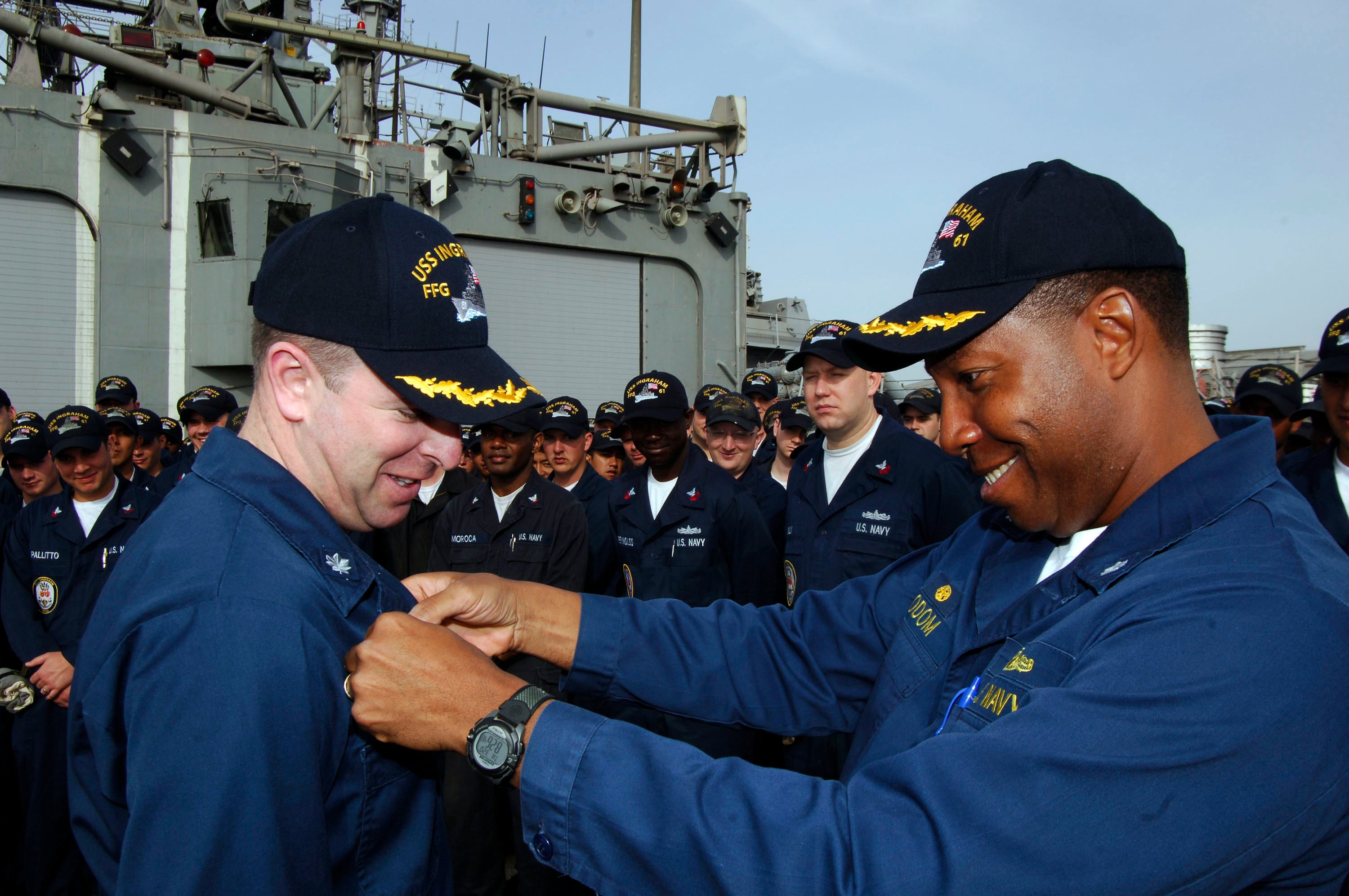Command pins aren't just for captains and below anymore.The Navy is expanding wear rules for command pins again this year.
New rules allow admirals to wear wear the command at sea or ashore pin, provided they earned their "sheriff's badge" before as a commanding officer.
In June 2014, officials changed wear rules of the pin, authorizing commanding officers in charge of pre-commissioning units to wear the pin. Previous rules required the ship to be in full commission before the CO got the pin, known to many as "the sheriff's badge."
Annew change is imminent that will authorize wear by flag officers who had previously served as CO's and worn the badge while a Ccaptain or below.
The changes were prompted by feedback from the fleet, said In a July 28 interview, Vice Adm. Bill Moran, the chief of naval personnel., said the initial changes originated by feedback from the fleet. The latest move to allow flag officers to wear previously-earned command pins was decided he said as a follow, he said "because it just makes sense," said Vice Adm. Bill Moran in a recent interview.
"The commanding officer is the heart and soul of our Navy, at sea and ashore," Moran said. "It's what we revolve around as a Navy."
The Command at sea pin, according to Navy officials, was established in 1960 "to recognize the responsibilities placed on those officers of the Navy who are in command, or who have successfully commanded, ships and aircraft squadrons of the fleet," according to the Navy's Military Personnel Manual. an official/instruction/or what?
The Command ashore the pin was established to recognize for recognition of those who command or previously commanded installations and shore-based operational commands.
But flag officers can’t earn the pin, officials say. This means Flags in command of either carrier or expeditionary strike groups, for example,, will only be allowed to wear their command insignia Command-at-Sea pin if they earned it before putting on their stars.

Cmdr. Rick Odom, right, pins Cmdr. Matthew Ovios with the Command-at-Sea pin during a change of command ceremony aboard the guided-missile frigate USS Ingraham.
Photo Credit: Chief Petty Officer Jonathan Kulp/Navy
The new rule for the flags applies to wear of both pins and will be effective effectively upon the release of the NavAdmin message. Any flag officer who was authorized to wear either pin as a captain or below will now be authorized to wear them again.
Command is hailed as the pinnacle of an officer's career, the demanding post that requires mission accomplishment, rock-solid integrity and taking care of sailors. Recognition of having been a CO past command is very important to officers, Moran said, because of the professional emphasis the Navy places on commands.
"It got me thinking that I had to take that pin off when I made flag, we looked into that, too," he said. "When you really dive into it, there really is no good reason, why it's not authorized for flags."
Moran notes that those who serve on the Joint Staff, for example, earn a badge they can wear for the rest of their career. have a badge they wear during their service and it’s "wear is authorized for the rest of your career."
"Why not the command pin — it's just become 'what we've always done' so I shared those thoughts with [Chief of Naval Operations Jonathan Greenert] and he said to change it — so we have."
For flag officers, the both the Command at sea and ashore/project manager pins will be worn in the post-tour position on the left side. If both pins were earned, officers may choose to wear the command pin of their choice.
This isn't the first command pin change. In 2014, the rules were changed to allow COs of pre-commissioning units to wear the pin.
That change, Moran said, came after a last year’s change came during a discussion with Capt. James Kirk, the skipper of the Navy’s newest destroyer, the Zumwalt’s skipper — Capt. James Kirk.
"I didn't see a command pin on his uniform and asked him why he wasn't wearing it and he told me he wasn't authorized to [be worn] as a PCU CO," Moran said. "I just didn't think it made sense. So we looked at it and found out it was our policy."
— we owned it, so "Now we've changed the rules so PCU unit CO's can wear it too — everyone now knows who has the sheriff's badge on."
Moran says that for those that to many, the change might not appear to be much, but to those who have had command, it’s an important change. very important.
"Command at sea is really so central and crucial to the Navy and we hold our CO's accountable from the day they take command — even of a precomissioning unit," Moran said. "Not only should we honor that trust in words, but they should be able to wear that pin that shows we've put that trust in them."
And as for the idea of extending the wear to flag officers, Moran says the philosophy behind the change is the same.
"If we really [want] to believe in the value of command," he said, "the rank shouldn't matter."
Mark D. Faram is a former reporter for Navy Times. He was a senior writer covering personnel, cultural and historical issues. A nine-year active duty Navy veteran, Faram served from 1978 to 1987 as a Navy Diver and photographer.





